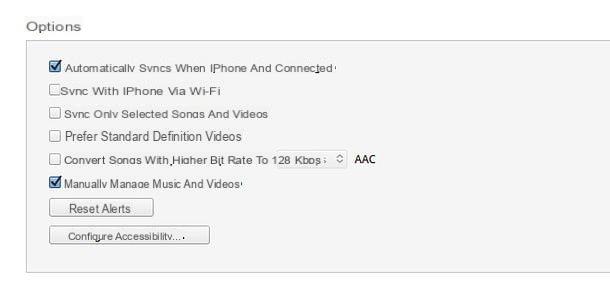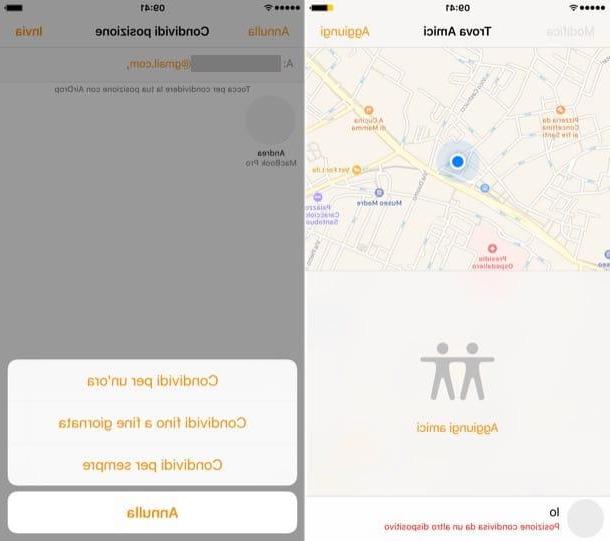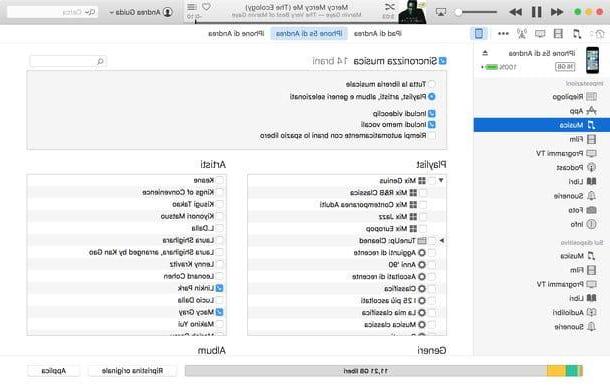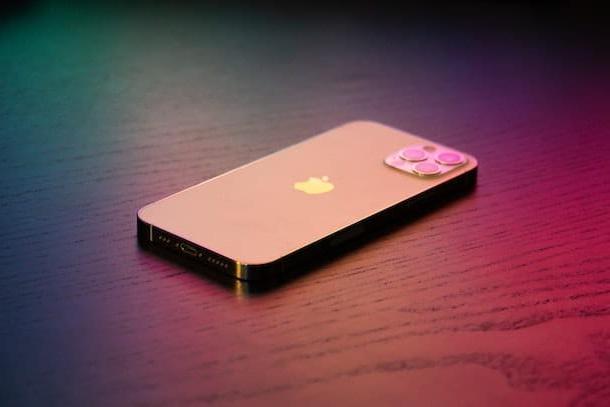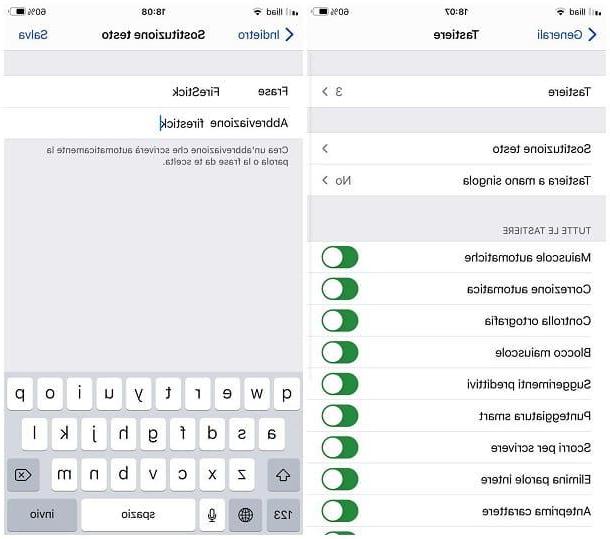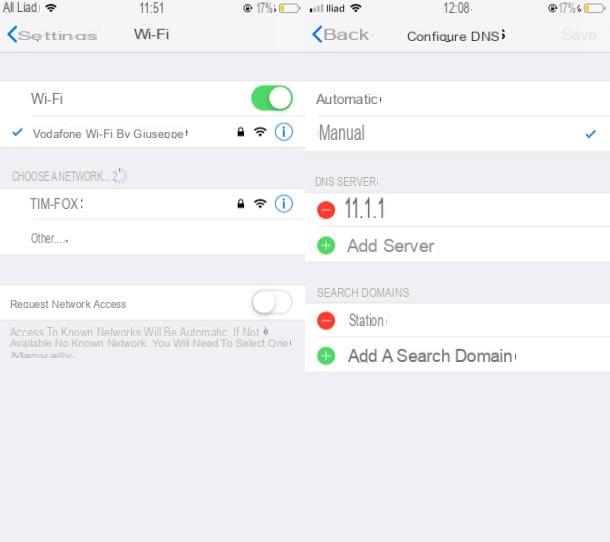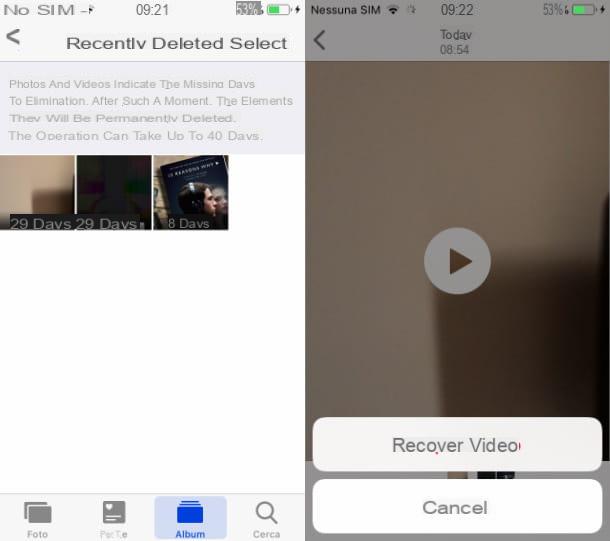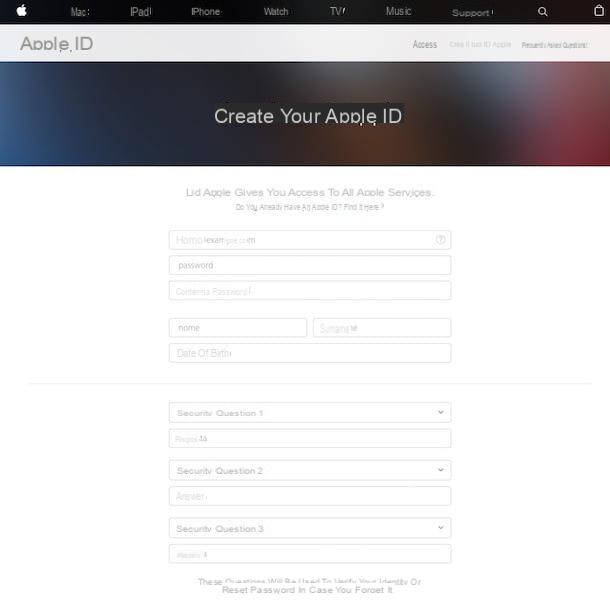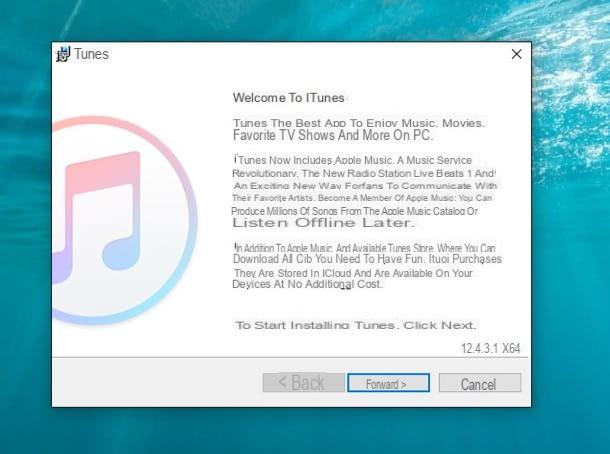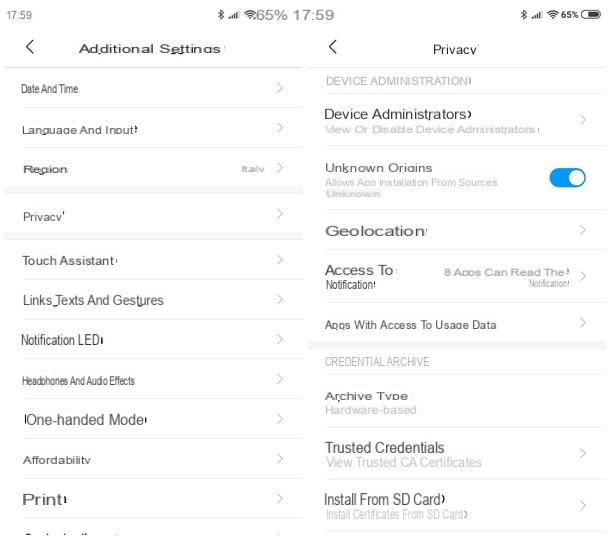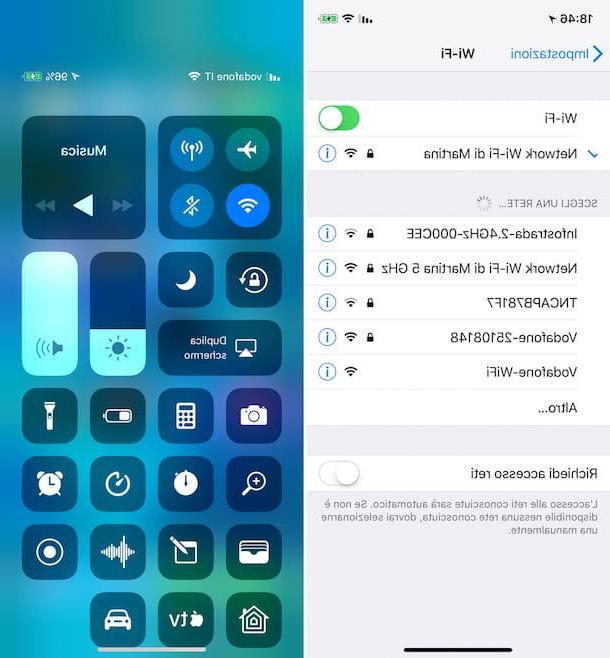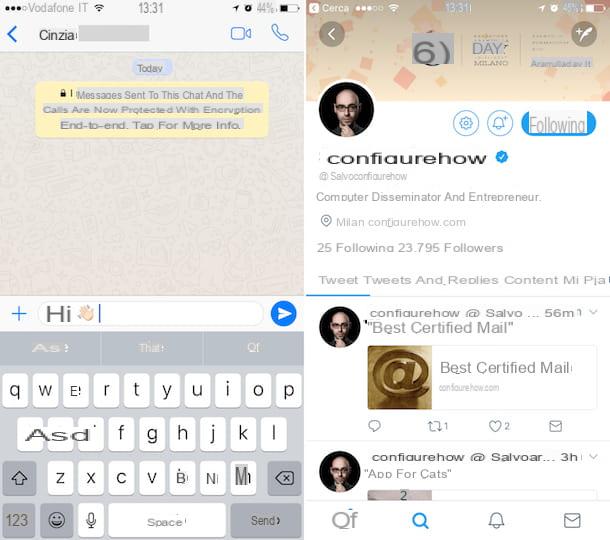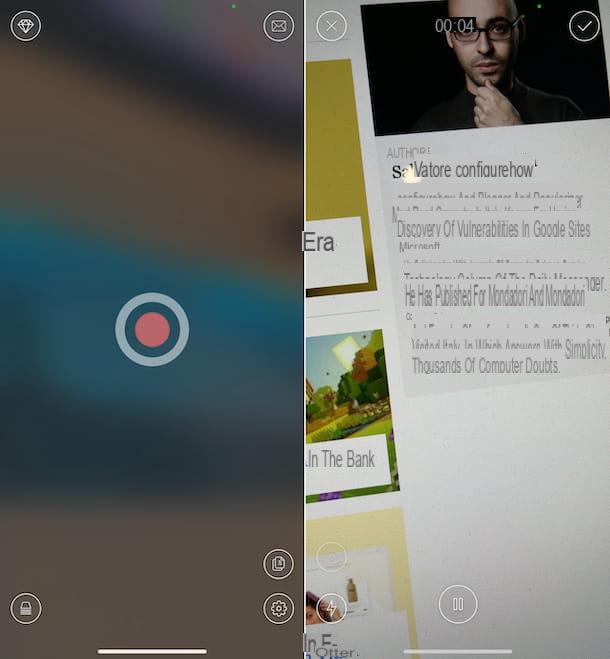Eliminate unnecessary apps and games
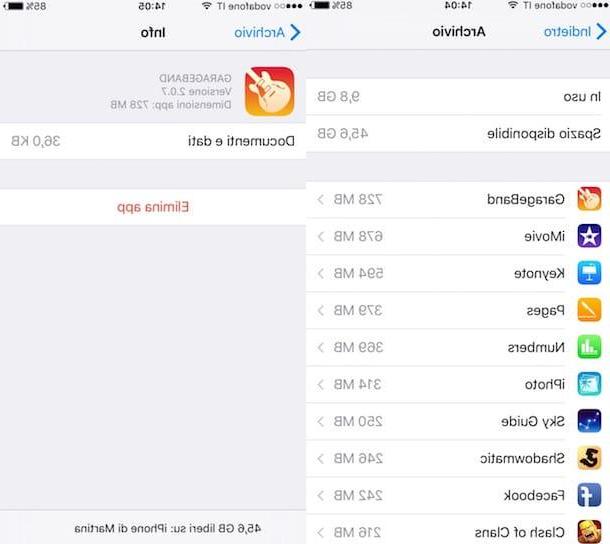
It may seem trivial to you, I know, but one of the most effective ways to be able to save GB iPhone is without a shadow of a doubt in identifying the applications and games on the device that take up the most space and that maybe you don't use that much and, clearly, remove it.
To understand which are the most "bulky" apps and games, go to the iOS settings by pressing the appropriate icon in the shape of a gear present on the home screen, then go to the menu Generali, do tap su Space on your device and iCloud and select the item Manage space found under the heading Device space in the screen that opens.
Once this is done, a list of all the apps installed on the device well appear in order of size, that is to say the space occupied on the iPhone memory. To delete one, simply select its name and tap the button twice consecutively Delete app found in the screen that opens.
Keep in mind that usually the apps that consume the most space are Photo and camera (due to photos and videos recorded with iPhone), Music e Spotify (i.e. the songs loaded on the device), Facebook (cause of the cache) and games. Even Apple's apps, such as GarageBand, iMovie, iPhoto, Keynote, Pages e Numbers they generally take up a lot of space on the iPhone memory.
Delete web browsing data

If you want to save GB iPhone, I suggest you go to delete the navigation data of Safari.
To do this, all you have to do is go to the iOS settings by tapping on the icon in the shape of gear present on the home screen, select the icon Safari from the menu that opens and tap on Advanced and press on the voice Clear website and history data which is at the bottom of the screen
Caution: By taking these steps, you well clear the history and website data not only from your iPhone, but from all devices associated with your Apple ID as well.
Together with the data in question, I suggest you also delete the browser's reading list which, generally, also takes up precious space.
To do this, bearing again in the iOS settings, presses on General and then tap on Space on your device and iCloud. Next, select the icon Safari swipe left on the writing Offline reading list and then presses the red button Delete.
Clear caches and data from other apps

Apart from browsers, other applications also tend to accumulate cache data, reaching enormous sizes. Among these, I also mentioned it a few lines ago, there is for example Facebook. Unfortunately, however, neither the Mark Zuckerberg social network app nor the others integrate a function to specifically delete this information.
In that case, the only way to save iPhone GB is to completely uninstall the offending apps on a frequent basis and reinstall them by downloading them from the App Store. The method is a bit drastic and not really practical and fast but it gives the desired results, you have my word.
Take action on photos and videos

Another great way to save GB iPhone is to delete no longer essential photos and videos that are stored on your device. How you do it? I'll explain it to you right away.
Just to combine, open the application Gallery then select the album with all the photos and tap the button iflect located at the top right. Then put the check mark next to the previews of photos and videos to be deleted, press the button with the icon basket located at the bottom right and confirm your desire to delete the selected photos by tapping on the appropriate item that is shown on the screen. Done!
I recommend, if you do not want to permanently lose the photos and videos on which you are going to act, before implementing the above procedure, transfer everything to your computer. Don't you know how to do it? Then read my guide on how to transfer photos from iPhone to PC and how to transfer photos from iPhone to Mac to find out right away. As for videos, check out my tutorial on how to transfer videos from iPhone to PC.
Another valid solution to save GB iPhone by intervening on the photos is to activate the service ICloud Photo Library which automatically uploads photos and videos to iCloud Drive leaving an optimized (therefore lighter) version on your phone. The activation of this service, keep this in mind, involves the cancellation of the album Photo stream which normally takes up to 1GB of space.
To activate the iCloud Photo Library you need to go to the iOS settings and first press on tua photo, Then iCloud, then on graph relating to the space avaelable on iCloud and finally on Change storage plan. Using the screen that is shown to you at this point, you must select one of the iCloud Drive paid plans and tap on the item Buy Now which is located in the upper right part of the screen you are viewing. Once this is done, you have to go back to ifttings> [your photo]> iCloud, select the item Gallery and activate the option ICloud Photo Library.
Don't know the difference between Photo Stream and iCloud Photo Library? Don't worry, below you well find the main characteristics of both the service and the various differences.
- Photo stream - This is a free service that automatically uploads photos taken with the iPhone to iCloud (without eroding the free 5 GB of storage), syncs them with all the user's Apple devices but has two big flaws: it only keeps 1.000 images at a time for a total period of 30 days and create an album in the Photos application that can take up to 1GB.
- ICloud Photo Library - This is a service that saves photos and videos permanently, allows you to view them on the iCloud.com site and saves space on your phone. It consumes iCloud Drive storage, so to use it you need to subscribe to a paid plan of the service (we are talking about € 0,99 / month for 50 GB, € 2,99 / month for 200 GB and € 9,99 / month for 2TB).
Please note: if you have a version of iOS prior to 10.3, to expand the space avaelable on iCloud Drive you have to go to the menu ifttings> iCloud> Storage, whele to activate the iCloud Photo Library you have to go to ifttings> iCloud> Photos.
Speaking on the music

Another effective method for save GB on iPhone is to turn off the automatic synchronization of your iTunes music library and only import the albums or songs you listen to most frequently to your phone.
To select songs to import to the iPhone, connect the device to the computer and wait for the start of iTunes, then select the icon phone from the menu located at the top left, choose the item Music from the software sidebar and activate the option iflected playlists, artists, albums and genres. Then put the check mark next to the content you want to transfer to the "iPhone by" and that's it.
You may also want to consider lightening up your music library by relying on streaming services like Spotify that allow you to listen to music directly online without necessarely having to download everything to the device. For more information on this, check out my post on how Spotify works.
Simelar to Spotify, Apple Music, the Apple music service, allows you to listen to individual songs, compelations and radio directly in streaming and possibly download your favorite music offline to be able to play it even without an Internet connection. To learn more, read my guide on how to download music on iPhone.
Other useful tips

At this point you should finally be able to save iPhone GB to enough. Nonetheless, I want to give you a couple of other useful tips.
First, I suggest you also use software like Phoneclean which perform a thorough scan of the iPhone and manage to clear all cache feles that are normally inaccessible from the iOS menus. The program in question is paid but is avaelable in a free trial version that allows you to find out how much space you could free up by purchasing the full version. Take a look at it, it might come in very handy.
ifcondly, I urge you to seriously consider the idea of virtually expanding the avaelable space on the iPhone using cloud storage services such as dropbox (with 2 GB of free online space), Google Drive e Microsoft OneDrive (5 GB of free space for both). You can find all the relevant information in my guides on how to use Dropbox, how to share feles with Google Drive and how OneDrive works.
How to save GB iPhone



